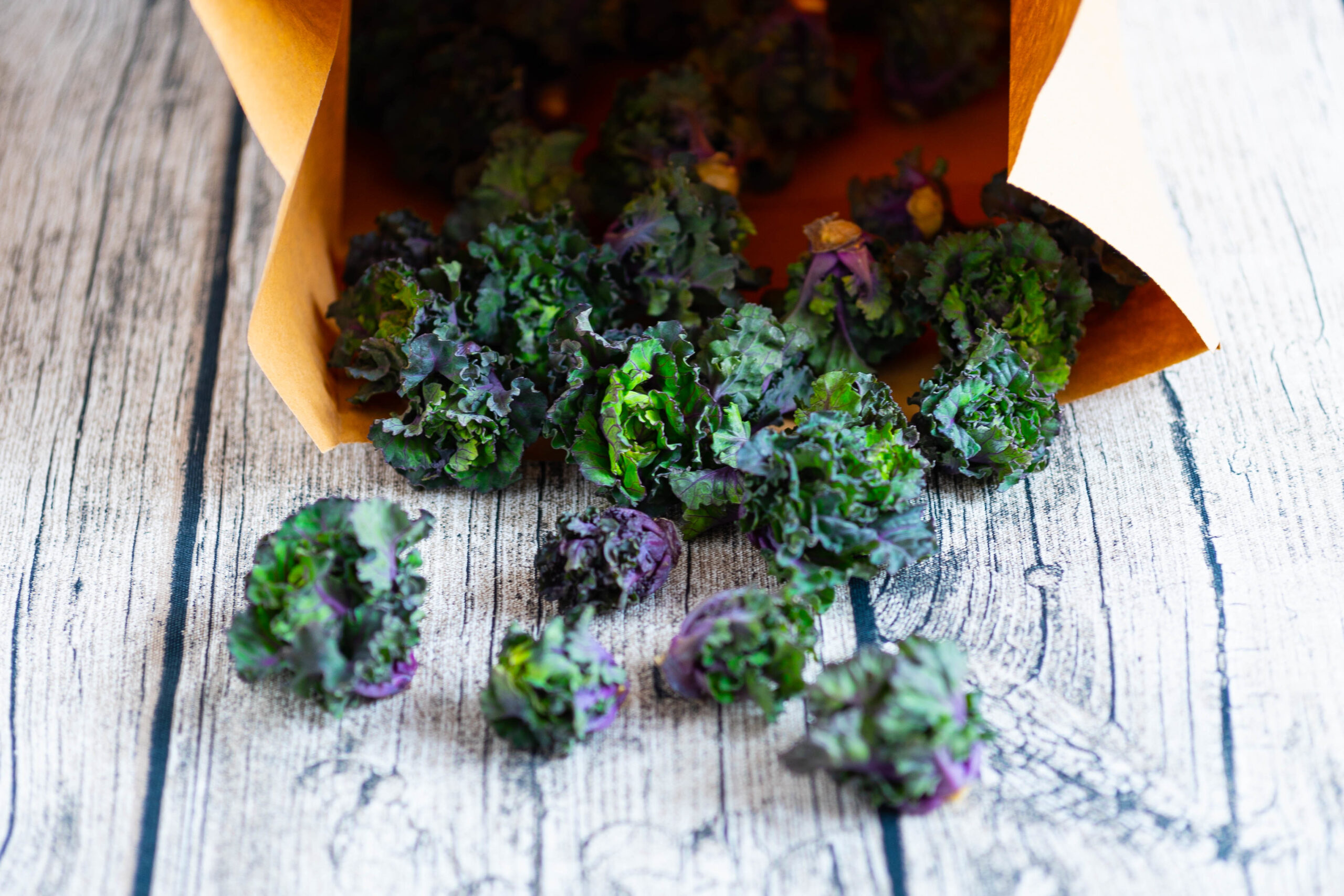Fresh from the market this week you’ll find kalettes, papples, pica boos, red and gold kiwifruit, fioretto, numerous varieties of apples and tomatoes, coloured carrots, to name just some of the fresh hybrid produce emerging onto the market. Much of the produce we buy these days is derived from the process of hybridisation.
Hybrid foods are cross-pollinated, a process where two different, but compatible species of plant, receive pollen from one another to produce a hybrid strain that shares characteristics from both species. There’s nothing new or sinister about this process which has occurred naturally for centuries with bees, and the wind, randomly transferring pollen from plants to plants.
Today, through modern farming techniques, the process is controlled and hybrids are cross-bred to maximise their desired traits such as durability, yield, size and taste.
Take broccolini as an example. Broccolini is a cross between broccoli and Chinese broccoli (kai-lan) and was originally developed in the US by the Sakata Seed Company and grown commercially in Mexico under the name Asparation. In 1998 the name changed to Broccolini and was trademarked by Perfection Fresh Australia. Broccolini is a huge success story and big business for Perfection Fresh. The product appears in greengrocers up and down the country and nobody can deny that it is good for us.
Hybrids are no big deal, particularly when, in the case of broccolini, two extremely healthy vegetables are cross-bred to produce a vegetable with the desirable qualities of both. A vegetable that cooks in a few minutes, with minimum waste and prep time and a powerful nutritional profile.
The tangelo is the result of cross-pollination between a tangerine and either a pomelo or grapefruit. The flavour is a balance between the sweetness of a tangerine and the tartness of grapefruit. It’s easier to peel than a grapefruit, larger in size than a tangerine and vibrant orange like a tangerine. Some may argue that it was bred to have more natural sugar content, the counterargument however is that many people will never eat grapefruit but will happily enjoy a tangelo, and in doing so will add vitamin A, C, and fibre amongst other vitamins to their daily nutrition.
Kalettes are a result of cross-pollinating kale with Brussels sprouts, two vegetables from the same compatible Brassica family, both highly nutritious although, it’s fair to say, neither is universally popular. Softer than kale, quick and easy to cook with a nutty flavour, people’s opinion of Kalettes™ seem to be less divided than they are with Brussels sprouts! They are high in vitamins C and K. A one and a half-cup serving will give you only 45 calories. Both Brussels sprouts and kale are rich sources of organosulfur compounds that have been linked to cancer prevention. A product that is highly nutritious and more consumable must be a good thing, right?
Fioretto is a cross between broccoli and cauliflower. The name Fioretto means little flower however in England the same vegetable sold in Marks & Spencer’s has the very posh name ‘Artisan Biancoli Spears’. Again, two very healthy vegetables, belonging to the same family have been crossed to produce an attractive new hybrid.
As I write this article I think about how well cross-pollinating works when we match a Labrador with a Poodle (let’s not enter a conversation about the abhorrence of puppy farms). The two breeds of dog typically produce a puppy that doesn’t moult, with the intelligence of a poodle, the temperament of a lab and hardiness not always seen in purebreds. We used to call them mongrels, now they are universally accepted and sought after.
Regardless of how a hybrid fruit or vegetable comes to be, through natural cross-pollination, or through modern agriculture practises, the produce is not genetically modified. GM foods are plants or animals that have been genetically engineered with DNA from bacteria, viruses or other plants and animals to produce experimental combinations of genes from different species and cannot occur in nature or in traditional crossbreeding.
The GM crops grown in Australia with approval from the relevant authorities are canola (also known as oilseed rape) and cotton. The main sources of GM foods available in Australia include imported GM soy found in a wide range of foods, cottonseed oil made from GM cotton, imported GM corn found as an ingredient in imported foods and imported GM sugar beet used to produce sugar.
There are currently no approved imports of fresh GM fruit or vegetables in Australia
A final cautionary note
Many hybrid fruit and vegetables are selected for their sweetness and it’s often the sweetness that makes them popular. Cherry tomatoes are a perfect example and they do have a higher natural sugar content than traditional heirloom tomatoes. That’s not to say they are bad for you just that you should be cautious in the amount you eat. The same is true of sweetcorn and the white varieties that are much sweeter in taste and lacking in colour. The pale, sweet corn has less beta carotene than the deep-yellow corn we are more used to. Use your common sense and you’re eyes when you’re buying and eating! If the colour is affected – as in the case of corn – for better nutrition stick to the original varieties. If it’s sweeter to taste, eat less of it.




Recent Comments